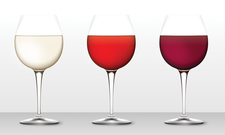Running Windows programs on Linux with Wine
Wine Importer

© Shanna Korby, Fotolia
Users who move from Windows to Linux often miss some of their favorite programs and games. Wouldn't it be practical to run Windows applications on the free Linux operating system? Time for a little taste of Wine.
Many Linux migrants miss games and graphics programs such as CorelDRAW or products such as Adobe Photoshop. The only solution is to install Windows parallel to Linux -- or try Wine, which tricks applications into believing they are running on a Windows system.
The history of Wine goes back to the year 1993. At the time, Sun developed a small tool to run Windows applications on its own Solaris operating system – without the need for a Windows license or other interaction. This software inspired Bob Amstadt and Eric Youngdale to develop something similar for Linux. A short while later, the first version of Wine was released. Today, more than 300 volunteer programmers from all over the world continue to contribute to the Wine project.
What's in a Name?
To run Windows programs on Linux, Wine uses a fairly complex trick: It sits between the Windows application and Linux like a simultaneous interpreter. If the Windows application says: "Draw a button," Wine passes this command directly to Linux. In contrast to VirtualBox or VMware, Wine does not emulate a whole PC and is thus not a real emulator. This also explains the name Wine, which means Wine Is Not an Emulator.
[...]
Buy this article as PDF
(incl. VAT)
